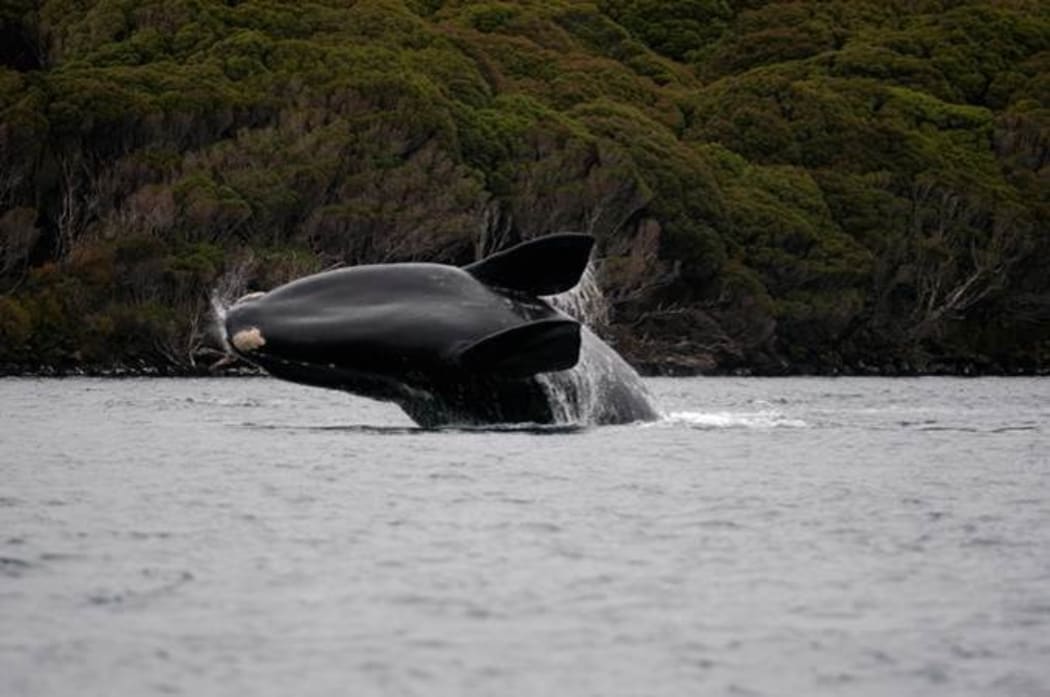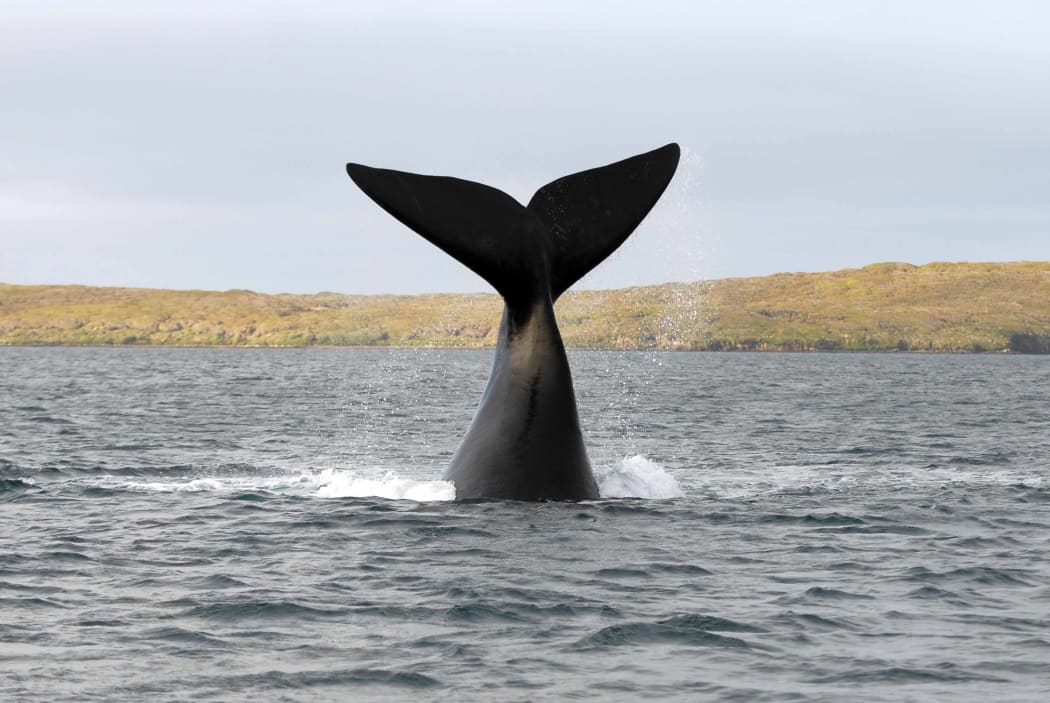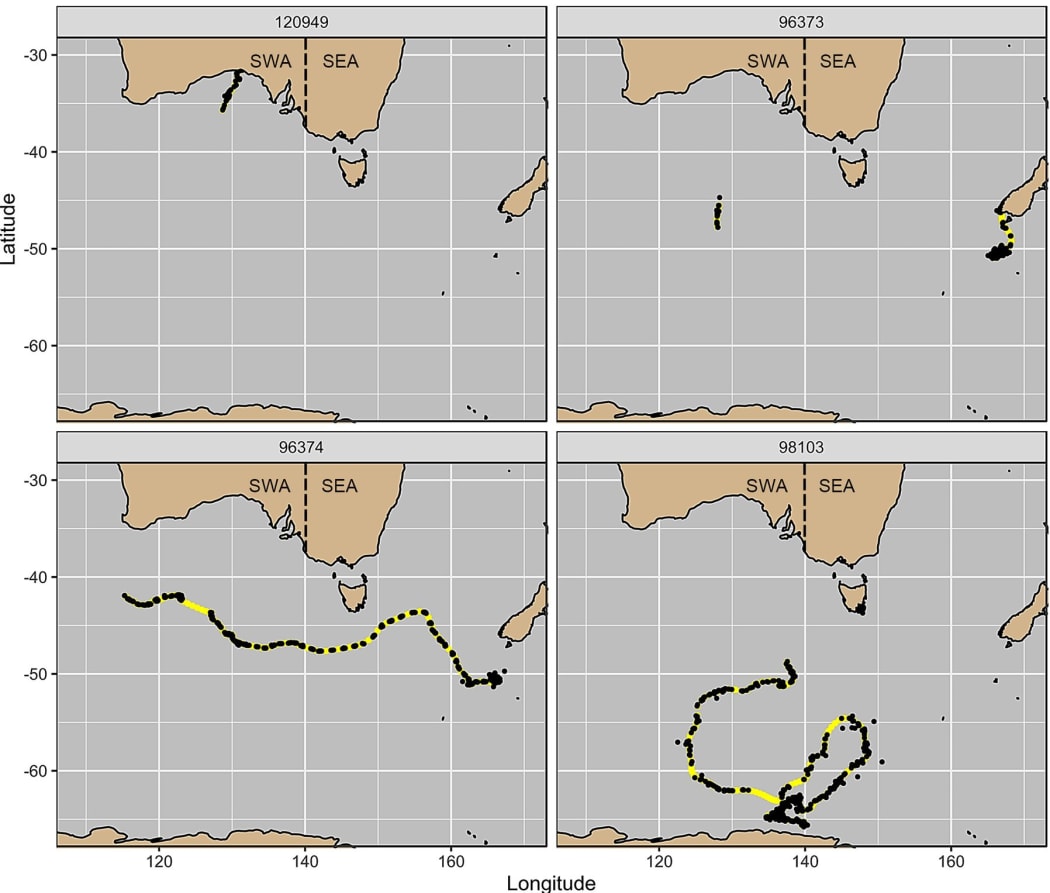Researchers are using satellite tracking to find out where New Zealand’s southern right whales, or tohorā, go when they leave their winter breeding hotspot at the subantarctic Auckland Islands.

Southern right whale breaching, Auckland Island. Photo: University of Auckland southern right whale research team 2008
Find Our Changing World on Apple Podcasts, Spotify, Stitcher, iHeartRADIO, Google Podcasts, RadioPublic or wherever you listen to your podcasts
Tohorā used to be a common sight around New Zealand’s shores. Then, commercial whaling took them to the edge of extinction.
The New Zealand southern right whale population plummeted to perhaps just 40 animals by 1920, from more than 30,000 before Europeans arrived in the late 18th century.
Since whaling ended and the whales have been protected their numbers have been climbing steadily. The most recent population estimate, from 2009, is about 2,000 whales.
The whales’ main breeding ground is at Port Ross, in the Auckland islands, and researchers - who have been studying the population there for several decades – have counted up to 200 individuals there in winter, including 50 cow-calf pairs, in the large harbour’s sheltered waters.
“It’s not a big place. It’s basically whale soup,” says Rutherford Discovery Fellow Emma Carroll, from the University of Auckland.

A southern right whale tail slapping in Port Ross, Auckland islands. Photo: University of Auckland southern right whale research team 2009
Where do the whales go in summer?
Emma Carroll is currently leading an expedition to the Auckland islands, and one of the team’s goals is to attach six satellite tags to find out where the whales go when they leave the breeding ground.
Only two tohorā have been successfully tagged and tracked prior to this, and the pair did very different things.
An adult male (tag number 96373) moved north from the Auckland islands to Stewart Island, stopped transmitting for a while and then turned up south of Western Australia.
The adult female (tag number 96374) headed west to feeding grounds along the subtropical convergence, south of Australia, where warm subtropical waters meet cooler subantarctic waters.

Satellite tags allow researchers to track the movements of southern right whales. Adult male 96373 (top right) was tagged at Auckland Island and moved to southern New Zealand and later on was recorded south of Australia, while adult female 96374 (bottom left) moved west to feed along the subtropical convergence. Photo: PLOS ONE
Public help needed to sight whales
Although right whales usually return to breed in the place they were born, meaning most animals return to the Auckland islands, Emma says that small numbers of right whales are also returning to mainland New Zealand.
She says there have been large groups seen off Southland, and two females have each given birth to two calves off northern New Zealand.
“Hopefully that’s the beginning of that new knowledge of the mainland as a good place to come and have babies,” says Emma.
Emma cautions that modern New Zealand poses lots of hazards to whales, from ships to pollution and fishing nets.
She points to the highly endangered northern right whale as an example of a species barely surviving these sorts of challenges.
“That’s our cautionary tale,” says Emma. “Our whales have done well because they are down in the subantarctics where there are no people and very few ships. But as they start coming back and exploring the mainland we want to be welcoming. We want to make space for them.”
The researchers are asking for help from the public to report sightings of whales around New Zealand, to help build a picture of how many whales there are and where they are.
Live Ocean is helping in the whale sighting project and you can find more information at their website.
You can follow the Marine Mammal Ecology group at the University of Auckland on Twitter or their blog.
Listen to the interview with Emma Carroll to find out much more about New Zealand’s southern right whales, as well as the results of recent satellite tagging of right whales from Australia and South Georgia.


